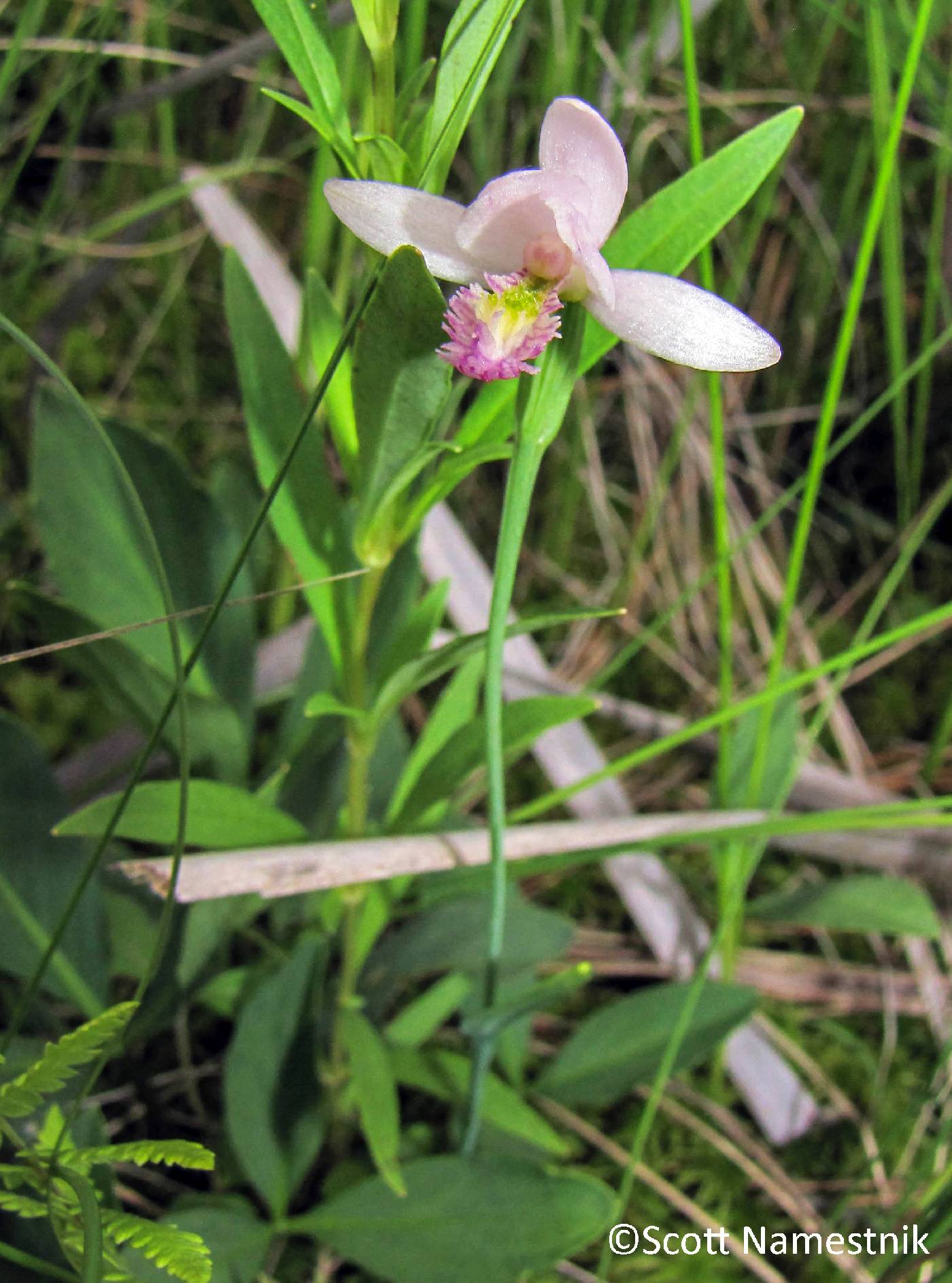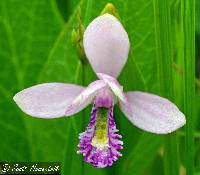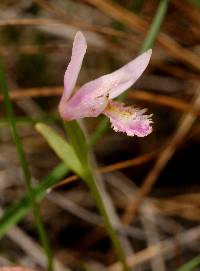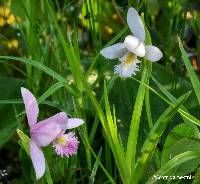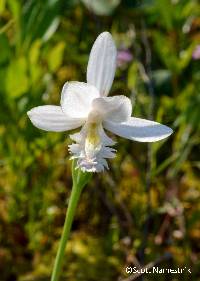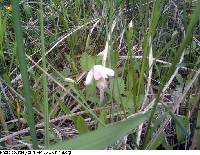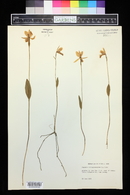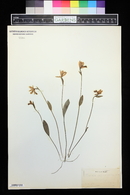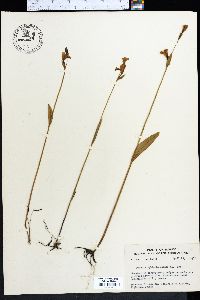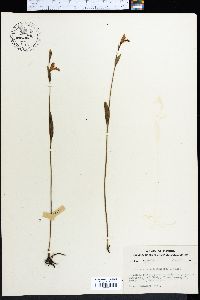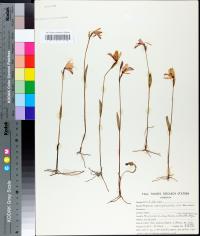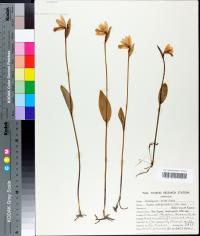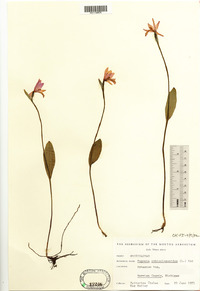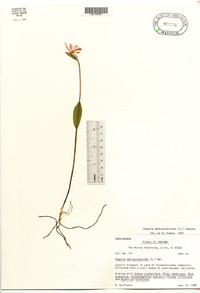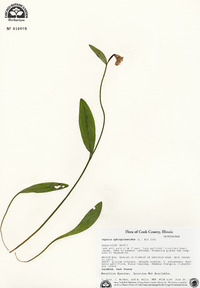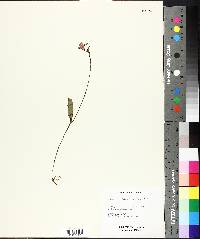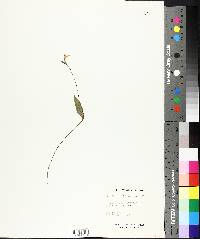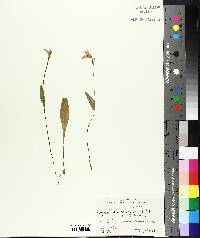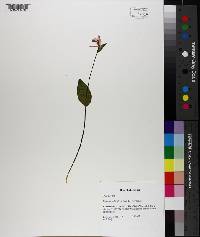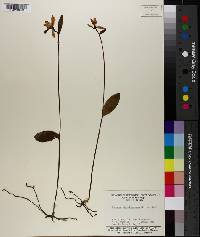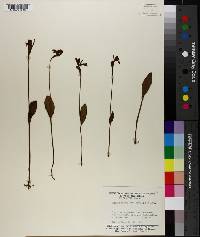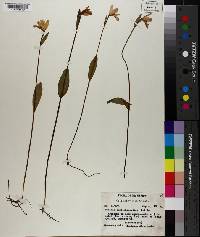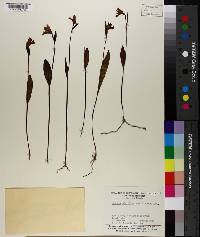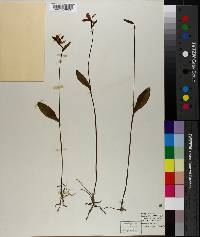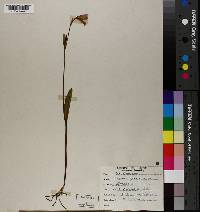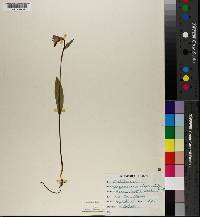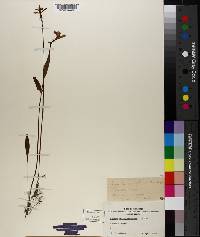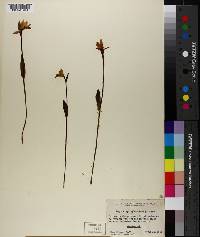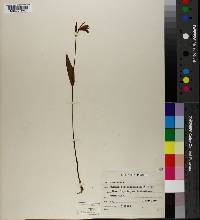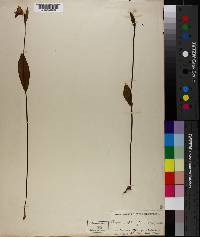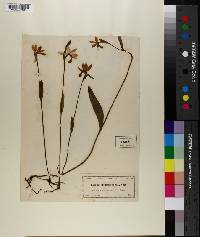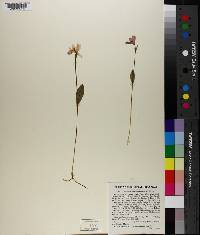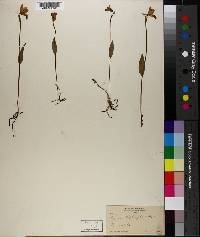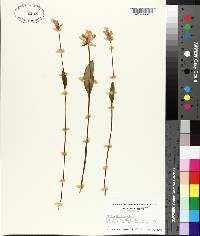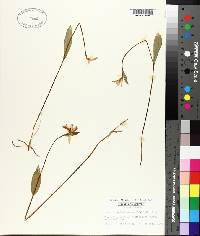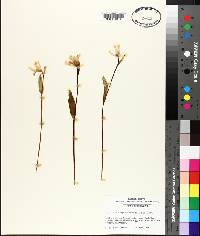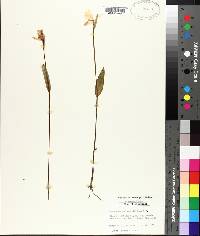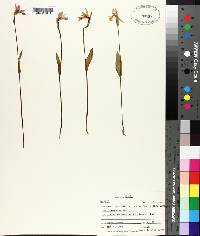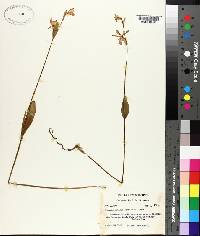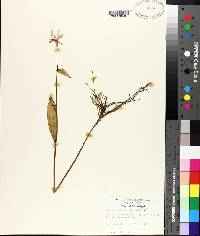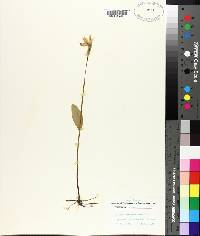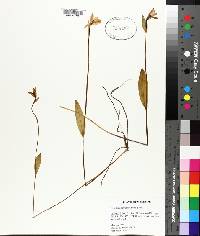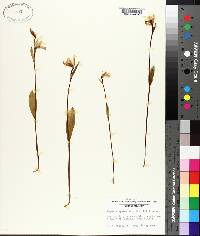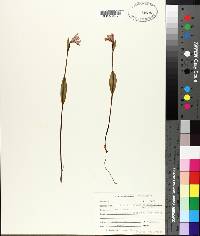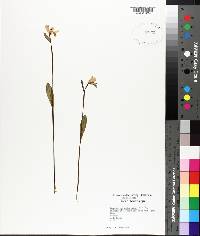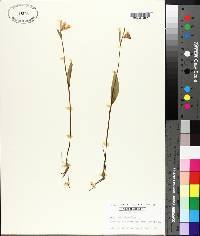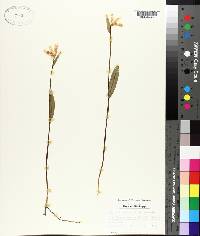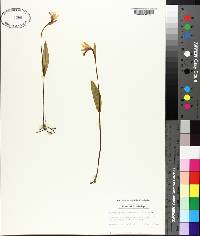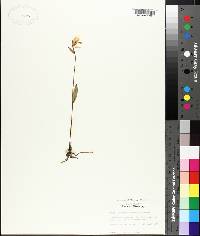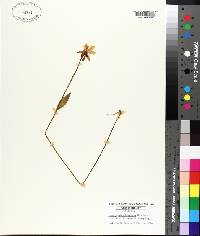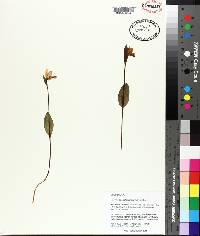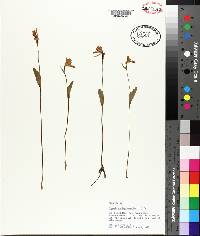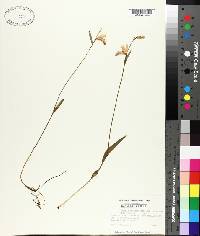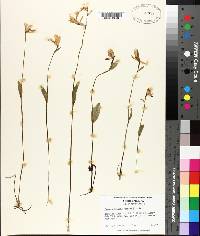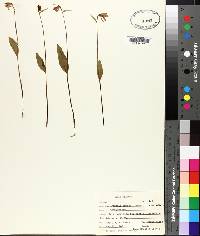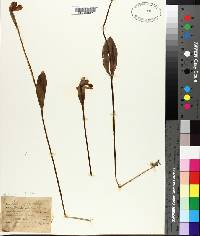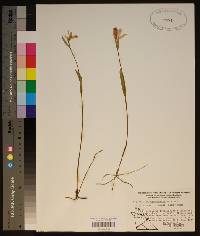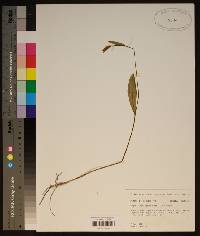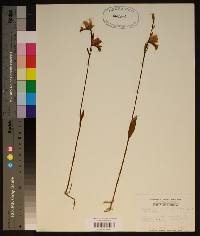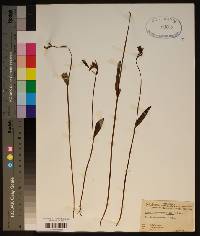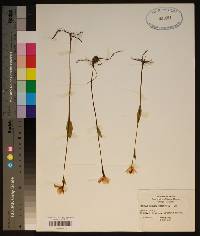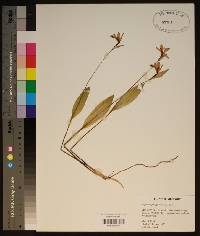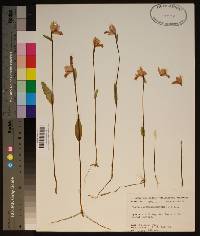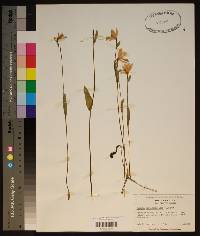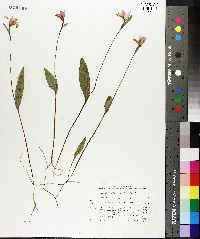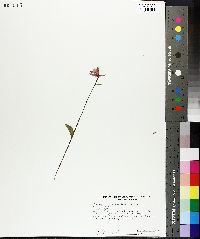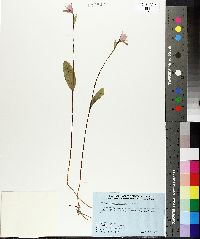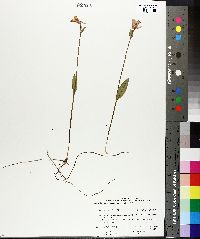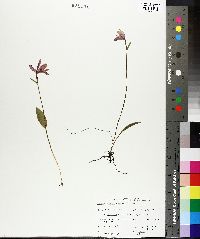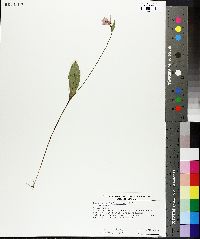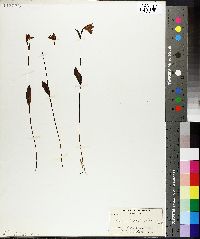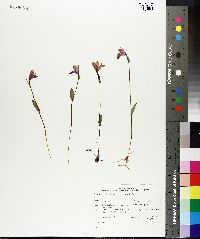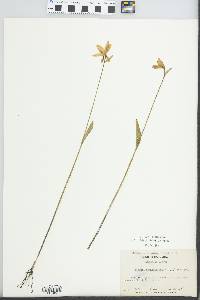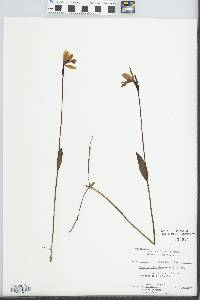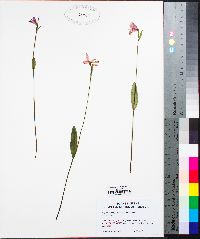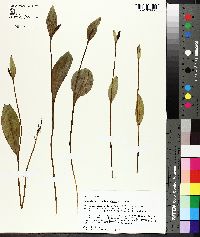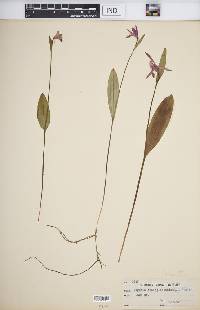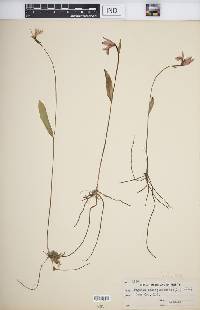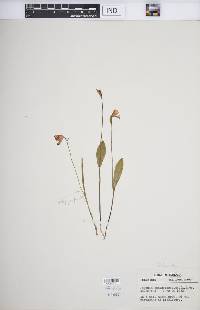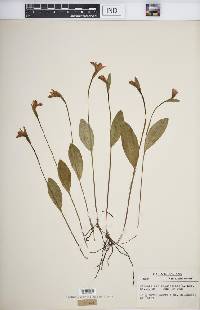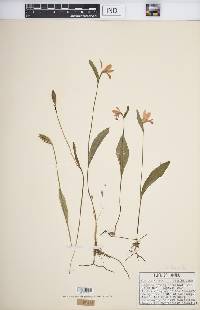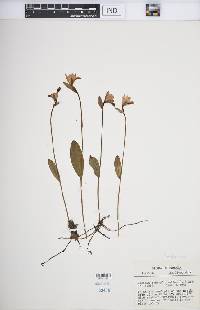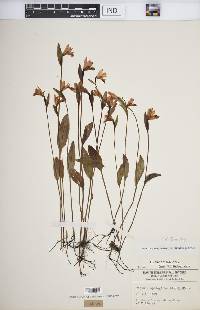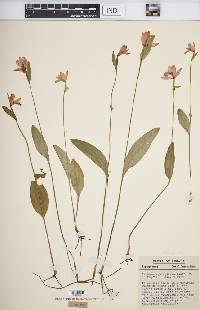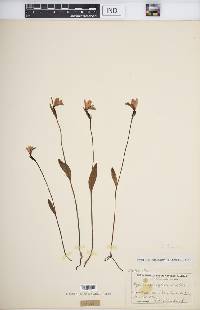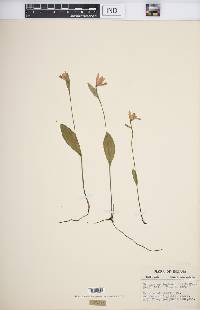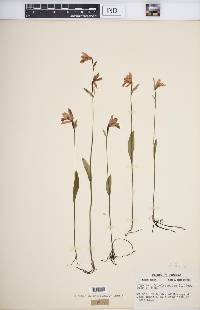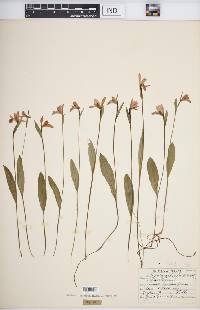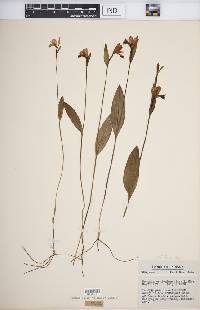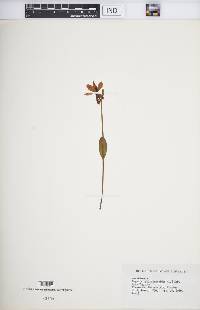Pogonia ophioglossoides
|
|
|
|
Family: Orchidaceae
Snake-Mouth Orchid, more...snakemouth orchid
[Arethusa parviflora Michx., morePogonia ophioglossoides f. albiflora E.L.Rand & Redfield, Pogonia pendula] |
Plants 4-70 cm. Leaves: blade elliptic, narrowly lanceolate, lance-ovate, or oblong, 14-120 × 4-32 mm. Inflorescences: floral bracts conspicuous, foliaceous, 7-37 × 2-12 mm. Flowers solitary or 2-flowered raceme, pink or rarely white or bluish, gaping, showy; sepals oblong, oblong-elliptic, or narrowly lanceolate, 14-23 × 3-7 mm; petals elliptic to lance-obovate, 13-25 × 3-11 mm; lip spatulate, 12-25 × 4-10 mm, margins involute, lacerate; crest often white, yellow, or green toward base. Capsules erect, ellipsoid, 14-30 × 4-8 mm. 2n = 18. Flowering spring--summer. Sphagnum bogs, poor fens, moist acidic sandy meadows and prairies, open wet woods, wet pine flatwoods, pine savannas, cypress swamps, sandy-peaty stream banks, seepage slopes, ditches, roadcuts, rarely calcareous fens; 0--1100 m; St. Pierre and Miquelon; Man., N.B., Nfld. and Labr. (Nfld.), N.S., Ont., P.E.I., Que.; Ala., Ark., Conn., Del., D.C., Fla., Ga., Ill., Ind., La., Maine, Md., Mass., Mich., Minn., Miss., Mo., N.H., N.J., N.Y., N.C., N. Dak., Ohio, Okla., Pa., R.I., S.C., Tenn, Tex., Vt., Va., W.Va., Wis. Perennial herb 10 - 60 cm tall Inflorescence: of one, erect, terminal, short-stalked flower subtended by a 1 - 3.5 cm long, 4 - 8 mm wide, oblong-elliptic to lance-shaped, leaf-like bract. Sepals: three, spreading (one upward, two fairly horizontal), petal-like, deep pink to magenta, 1.5 - 2 cm long, 0.3 - 0.6 cm wide, elliptic to somewhat lance-shaped. Petals: three, lip slightly down-curved, upper two close together and pointing forward to slightly ascending. The lateral petals are solid pink to magenta, 1.5 - 2 cm long, 0.3 - 0.9 cm wide, elliptic to oblong, non-toothed, and more blunt at the tips than the sepals. Lip pink-magenta along edges, 1.2 - 2 cm long, 0.4 - 0.9 cm wide, spoon-shaped with narrowed base and deep, uneven, long fringe along edges of expanded tip. The central surface of the lip is typically pale yellow or greenish with spots of dark purple, and has three lengthwise rows of bright yellow fleshy bristles along the main veins. Fruit: a single, erect, short-stalked, 1.4 - 3 cm long, 0.4 - 1 cm wide, ellipsoid, beakless capsule with three lengthwise ridges, and subtended by remnant bract. Flowering stem: single, erect, hairless, fleshy, with a single leaf about midway before ending below a single flower. Root system: a slender rootstock with scattered fibrous, true roots, and widely spaced rhizome-like root-shoots which give rise to new plants. Leaf: one, about midway along stem, ascending, stalkless, non-toothed, fleshy to leathery, 2 - 12 cm long, 1 - 3 cm wide, egg-shaped to elliptic. Scattered offshoot plants and non-flowering plants often produce basal leaves of similar shape and size but with more or less long stalks. Flower: deep pink to magenta, fragrant, showy, about 4 cm diameter, bilaterally symmetric with one petal formed into a lip, but lacking a spur. The reproductive parts of stamens, stigma and style are fused into a column above the inferior ovary. Similar species: Pogonia ophioglossoides is probably most easily confused with Arethusa bulbosa, which often grows in similar habitats, but that species has no leaves at flowering time, the bract below the flower is tiny (2 - 4 mm long) and difficult to see, the sepals and lateral petals of the flower are erect, and the flower lip has a distinct raised ridge of yellow bristle-like projections and only a wavy or crinkly edge, never a long-fringed tip. Also somewhat similar is Triphora trianthophora, but that species typically has three to five stem leaves, three flowers per plant, paler flowers with a toothed (not bearded) lip, and three, initially drooping, then erect beaked capsules per stalk. A common associate of P. ophioglossoides, Calapogon tuberosus, may also appear similar, but that species has more than one flower per stem (typically three to ten), no floral bracts, and a single basal, grasslike leaf. Also the flower of C. tuberosus, while similar in color to P. ophioglossoides, is quite different since the lip is positioned above, not below the sepals and lateral petals. Flowering: early June to July Habitat and ecology: Not common overall, local in bogs, peaty or calcareous fens, pannes, interdunal swales, and in the Kankakee Sand section and Northwest Morainal region of Indiana mostly in wet acidic sand flats. Occurence in the Chicago region: native Notes: Pogonia ophioglossoides spreads by root-shoots and can form dense colonies. Often the stalked basal leaves are much more numerous than flowering stems in a population. It is not uncommon for very few plants (or none) to flower in a population for several years, but when conditions become more favorable an area will suddenly be blanketed in blooms. The flowers have a distinct fragrance that some have described as similar to red raspberries. This is the only species of Pogonia in North America, with only two or three species worldwide. The genus used to include Triphora and Isotria but there are differences in column morphology, namely Pogonia has a minutely toothed column with a terminal, decumbent anther containing simple pollen grains instead of pollinia. Etymology: Pogonia comes from the Greek word pogon, meaning beard, in reference to the bearded lip of the flower. Ophioglossoides means resembling Ophioglossum, the adder's tongue fern, for which the leaves look similar. Author: The Field Museum Slender, (1-)2-4 dm; cauline lf lanceolate or narrowly elliptic, 3-9 נ1-2.5 cm; bracteal lf similar but smaller; sep and lateral pet rose-pink to seldom white, 17-22 mm; sep lanceolate, widely spread, the dorsal one nearly erect; lateral pet elliptic, hovering over the column; lip about as long as the sep, usually pink, veined with red, bearded with yellow hairs; 2n=18. Open, wet meadows and sphagnum-bogs; Nf. to Minn., s. to Fla. and Tex. May-July. Gleason, Henry A. & Cronquist, Arthur J. 1991. Manual of vascular plants of northeastern United States and adjacent Canada. lxxv + 910 pp. ©The New York Botanical Garden. All rights reserved. Used by permission. From Flora of Indiana (1940) by Charles C. Deam Formerly frequent in peat bogs in the lake area, now infrequent to rare on account of drainage. In addition to the counties shown on the map it has been reported from Fulton and Marshall Counties. …… Indiana Coefficient of Conservatism: C =10 Wetland Indicator Status: OBL |
|
|
|

